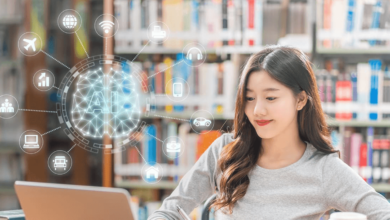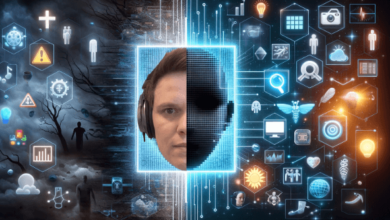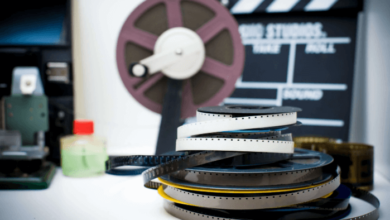AI Image Detector: Combating the Rise of Manipulated Media

With AI Image Detector, we are trying to address the problem of manipulated media.
Since we live in a visual world, pictures and videos help determine public opinion, shape social conversations and direct outcomes in journalism and police work. Yet, because AI-driven editing technology is advancing fast, telling if media has been altered can be very hard. That’s the reason AI image detectors are used—they can discover changes made to images, whether small or big.
What does an AI Image Detector do?
An AI image detector is made to identify changes in images using machine learning technology. Such tools can find out if someone has used airbrushing, cloning, splicing, deepfake technology or other types of alterations. Using inconsistencies found in the image’s pixels, metadata, lighting, shadows and compression, these detectors quickly provide an analysis at a forensic level.
The exponential rise in altered images on the internet makes AI image detectors more important now than before. As a result of fake news and online deceptions, as well as criminal cases, it is now more important than ever to confirm the authenticity of images.
Deepfake detection is gaining importance in our lives.
Deepfakes, images and videos that look very real because of AI, are becoming a real problem. They may portray people doing or saying things they are not responsible for, usually with bad reasons. The purpose of deepfakes has been to tell lies, cheat people and harass those in the public eye.
Deepfake detection is a branch of AI image detection that checks if a person’s face or body has been replaced, changed or entirely made up. These tools look at people’s faces, study their moods and watch their actions to detect if any irregularities indicate a deepfake has been used. Some applications use sets of neural network training data to match questionable media with real media to help identify fake ones.
To maintain the accuracy of visual content, social media, law enforcement agencies and media companies are now using AI-powered deepfake detection tools.
Photoshop Detector: Finding Out What Has Been Changed
While the most obvious image manipulation happens with deepfakes, Adobe Photoshop can be used to make just as many but subtler changes. Feel free to edit photos in everyday life, but changing anything about the image can seriously harm the truth in journalism, science or law.
That is why you should use Photoshop detectors. They look for signs that an image has been retouched by examining the pixels, brightness and the structure of the metadata. A dependable Photoshop detector will indicate parts of the image that are not original which helps analysts verify the image’s authenticity.
How Does an Image Photoshop Detector Function?
A Photoshop detector works by using several steps of analysis.
At Pixel Level: Finds areas with unusual groupings of pixels and changes in color and brightness.
Reviewing Metadata: Lets us discover the editing tools used and can tell whether the timestamps in the image correspond with what we have.
ELA can reveal compression errors that are commonly found where images are altered.
AI Pattern Recognition: Matches the patterns in images to those learned from previously altered pictures.
There are advanced detection tools that use Photoshop techniques to identify when photos are altered for color or when someone changes a face or content in the image.
Ways to Verify Images on the Internet
Many platforms now make it easy to detect photos with image Photoshop detectors online. Anyone, including journalists, researchers, students and regular people, can use these tools to confirm images on the web without the need for software.
With these detectors, anyone can upload an image and get a fast response on its authenticity. Some tools highlight areas that they suspect and they explain the reasons for raising suspicion. Although some online tools aren’t perfectly accurate, they help protect you against basic digital scams.
Uses of AI Image Detection Technology
AI detectors for images are used in different industries.
Media & Journalism: To ensure the photos we accept are real and never spread false news.
Legal & Forensics: To provide a way to use digital evidence in criminal proceedings and investigations.
Platforms for Social Media: To fight against fake news and misleading images getting popular online.
By using eCommerce and advertising, we can guarantee the pictures of our products accurately show what they look like and protect against fraudulent purchases.
Maintenance of credibility in scientific images is done through academic research.
What Is Happening in AI Image Detection Now
Since technology in AI tools is improving, we should also work on better ways to spot them. AI image detection will develop by speeding up analysis, joining forces with blockchain for image records and being used in multiple industries.
Current research is helping improve how we detect false images and subtle changes in photos. Because of synthetic media benchmarks, AI detectors now have better chances of spotting advanced fakes.
Final Thoughts
AI detectors for images act as digital guards in our age of image editing. If you are a journalist, a lawyer or anyone using social media, these technologies help you spot visual tricks.
With more deepfakes and altered pictures appearing, we require stronger Photoshop image detectors, online services and deepfake detectors now more than ever. Using AI detectors in images helps us get closer to a world where we can trust and believe what we see online.





